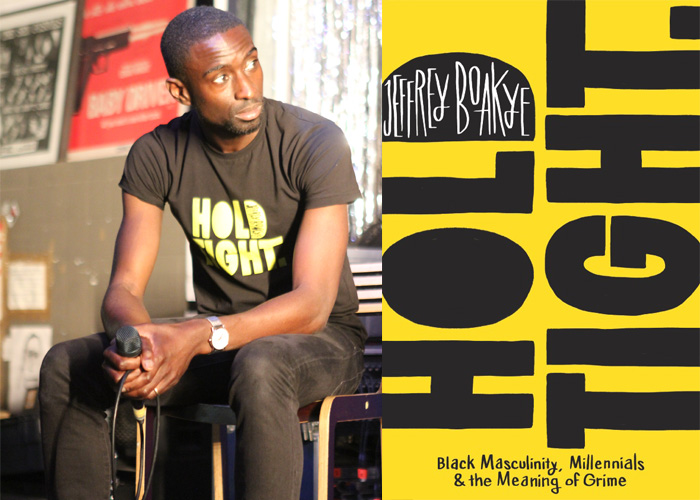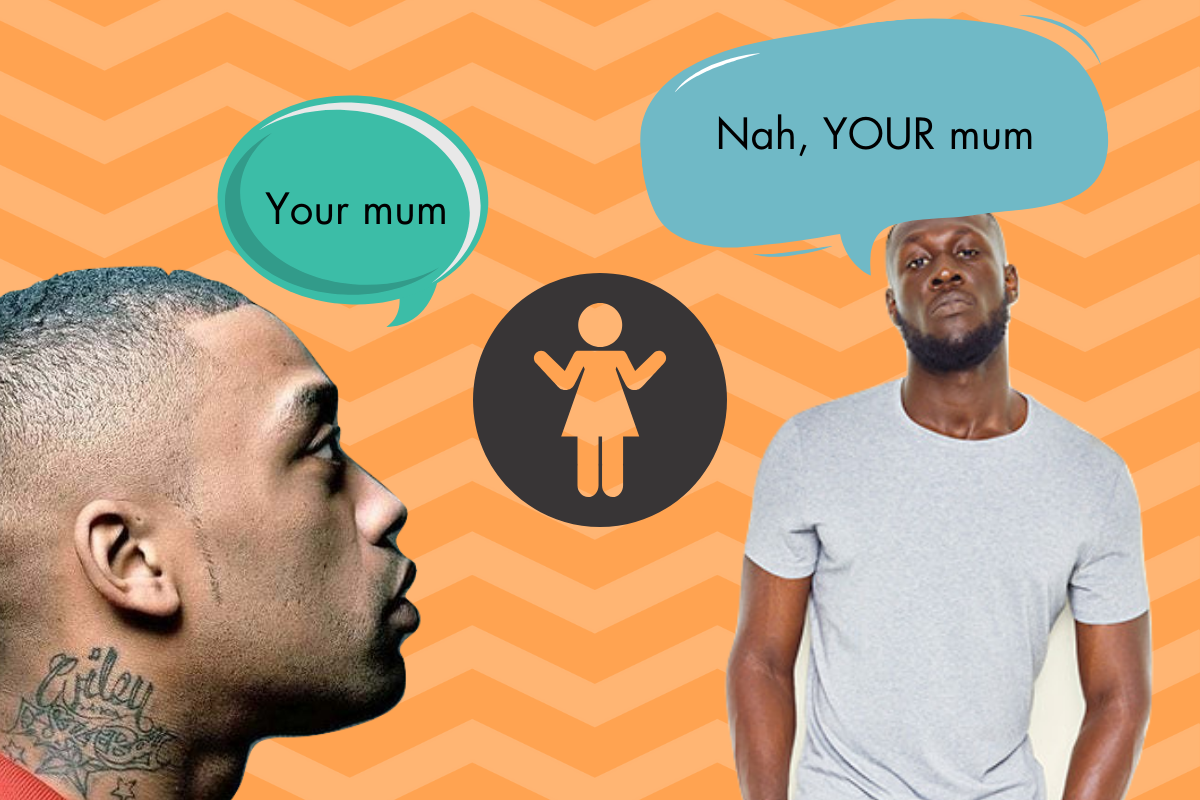
There is no doubt that Grime has been colonised over the last three years.
We’ve seen man driving a German Whip (2014)
We’ve seen Kanye bring out BBK for a firey performance at The Brits (March 2015)
We’ve seen Ice Kid rock up to the Red Bull Culture Clash after being missing from the scene for several years (June 2016)
We’ve seen Skepta win the Mercury Prize (September 2016)
We’ve seen Dizzee celebrate 10 years of his seminal debut album Boy In Da Corner (October 2016)
We’ve seen white journalists review Skepta’s sold out show at Alexandra Palace without knowledge of what a reload is (December 2016)
We’ve seen the long-awaited return of Lioness (June 2017)
And we’ve seen an ever-growing bank of documentation as the genre has graduated into its adolescence. The photographers and filmmakers: Ashley Verse, Hyperfrank, Nathan Miller, Olivia Rose, Simon Wheatley and Vicky Grout. The writers, Joseph JP Patterson, Hattie Collins, and most recently, English teacher and author Jeffrey Boakye, with his debut book release Hold Tight.
Hold Tight celebrates over 50 key songs that make up Grime’s DNA. Jeffrey Boakye explores the meaning of the music and why it has so much resonance in the UK. Boakye also examines the representation of [black] masculinity in the music and the media that covers it and the impact it is having on millennials.
“Boakye uncovers the skeletons of grime in an accessible way for connoisseurs and novices alike.”
You may wonder what the initial motivation was behind recounting the narrative in this format and at this moment in time. “Seeing the commercialisation of grime, its rise and fall and wanted to be vocal about it,” says Boakye. Skepta’s 2016 win of the Mercury Prize signalled a major milestone for the DIY genre and a co-sign by the mainstream powers that be. This transition has its merits but also downfalls. As put by Chante Joseph, “One of bi-products of grime becoming such a popular and well-respected art form is that everyone wants to see themselves in the sub-culture that surrounds it, so they feel closer to it.”
Hold Tight moves through the pre-Grime ages, to now. Tracing its inception within the roots of dancehall and hip-hop, to jungle,drum ’n’ bass, and garage, Hold Tight does its homework before really laying into the nitty gritty flesh of grime. Boakye uncovers the skeletons of grime in an accessible way for connoisseurs and novices alike. I ask him if this was his intention from the outset or if it had more of a Solange-esque FUBU vibe.
“The book starts with [the phrase] ’black people’. Those are the first words that you see and that’s what we’re really talking about — it’s in the subtext and in the context and this book is celebrating as well as critiquing grime’s relationship with itself,” he says very seriously.
As I said earlier, one cannot deny the colonisation of Grime over the last three years. Due to the prominence of social media and its newfound accessibility, the movement’s crossover into the mainstream often divides opinions as to whether it’s a blessing or a curse.
According to Boakye, Grime’s recent success is partly owed to this current “neo-liberal, Corbyn-ista age, where young people are searching for something real and authentic to resonate with in this flippant, fast-paced” environment. He argues that Grime is a “commodifiable entity” which makes it successful but that is also the danger because we move in a flippant age, it can be equally tossed aside when the mainstream grows tired of it.
However, Grime has a magic touch. “Not just anyone can make grime music and that’s why you haven’t really seen rip-off versions, because you can’t fake it,” Jeffrey says with a beam. For a while it has been perceived as scary and dangerous and gives off a punk vibe to young people, which is also what gives it its appeal. Now in its 15th (or so) year of existence, people are talking about it as if it has existed for decades. The Godfather, Wiley is in his 30s, so his juniors like Novelist, Dave and AJ Tracey have come up with the identity embedded within them.
Jeffrey Boakye is of similar age to Wiley and Brixton-born and having seen the pre-stages, I ask him what his research methods were for uncovering the history of some of the more niche tracks. Websites? Old magazines? Conversations with friends? “90 percent from my head… [the book] is like having a conversation with me. That’s why there are so many gaps because it’s not meant to be a comprehensive, definitive list. It is haphazard and that’s the beauty of it.”
Boakye says he regrets notable absences like Ms Dynamite’s UK anthem ‘Boom’. He mentions Tinchy Stryder and Nasty Crew as key figures who also aren’t mentioned in the book but he admits it would have lost its essence if he put people in simply because he felt he had to. And although the end product is delivered to us in chronological order, each track analysis was written as it sprung to mind.
The narrative of inner-city London black boys operating within or around the culture of grime is often depicted in a dark, monolithic gaze: gangs, violence, drugs. However, with his natural, conversational writing style, Boakye manages to acknowledge the darkness, giving it the careful considered attention it deserves (for example when he discusses the rise and fall of Crazy Titch), whilst balancing the fun and playfulness in the lyrical flair of the Tempa Ts and D Double Es. The humour of grime is rarely highlighted and celebrated in all it’s glory even though it is one of the scene’s fundamental qualities.
What’s the funniest Grime lyric of all time?
✏️” ____________”
— #0121Radio (@SBTVonline) May 13, 2016
The footnotes are hilarious and insightful but I wonder if there was there ever a point during the writing process where he felt that he had to confront himself. “Being a black man, it’s always about race. One of the rare treats we get of being black, is being able to talk about race openly and honestly because it is your life,” he says. Boakye explains that in order to understand grime’s relationship with itself, he had to reflect on the role black youths were forced to assume, and in turn rejected.
“Boakye explains that in order to understand grime’s relationship with itself, he had to reflect on the role black youths were forced to assume…”
As an English teacher who works with a lot of black youths, I’m intrigued to know how Hold Tight has been received by his students. “They loved it.
Some of my colleagues have been reading it in class and trying to unpick some of the key chapters.” After leaving a few copies in the school library, he tells me that he’d “be happy to influence the ways in which young people are perceiving themselves in the classroom”.
I tell him that I would have loved to have something like this in the classroom and he smiles. “I think they’re happy because they finally see something which they see as part of them, young people don’t see education as part of them or their experience/ culture.”
Hold Tight is out now and available to purchase from all major book retailers.
You can follow Jeffrey Boakye on twitter @unseenflirt









